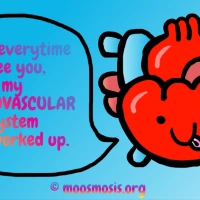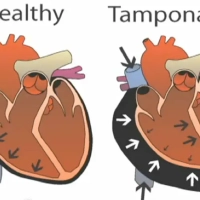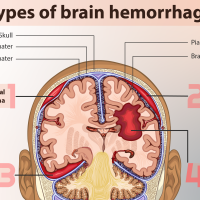Hello friends!
Cheers to a Healthier and Happier New Year: 25 Health and Wellness Tips For You

As we step into a brand-new year, it’s the perfect time to embrace positive changes for a healthier, happier you. This article lists 25 practical and enjoyable ways to enhance your well-being through mindful nutrition, invigorating exercise, stress reduction, and overall happiness. Let’s dive into a world of wellness and make 2024 your healthiest year yet!

- Start the Day with a Nutrient-Rich Breakfast: Begin your mornings with a burst of energy by enjoying a wholesome breakfast. Incorporate whole grains, fruits, and a protein source like eggs or yogurt to kickstart your metabolism. Mornings set the tone for the day, and a nutritious breakfast fuels your body and mind, providing the essential nutrients needed for optimal functioning.
- Hydrate, Hydrate, Hydrate: Water is your body’s best friend. Sip on water throughout the day to stay hydrated, support digestion, and maintain healthy skin. Carry a reusable water bottle to make hydration a constant companion. Adequate hydration is crucial for overall health, contributing to improved energy levels, mental clarity, and efficient bodily functions.
- Explore Colorful Fruits and Vegetables: Add a vibrant array of fruits and vegetables to your plate. Different colors indicate various nutrients, so aim for a rainbow of produce to ensure a diverse range of vitamins and antioxidants. Eating a variety of colorful fruits and veggies not only enhances the visual appeal of your meals but also provides a spectrum of health benefits, from immune support to heart health.
- Choose Whole Grains for Sustained Energy: Opt for whole grains like quinoa, brown rice, and oats. These grains provide complex carbohydrates, fiber, and essential nutrients, promoting sustained energy and supporting digestive health. Whole grains are a wholesome choice that helps stabilize blood sugar levels and keeps you feeling full and satisfied, making them a key component of a balanced diet.
- Prioritize Lean Proteins for Muscle Health: Incorporate lean protein sources such as chicken, fish, tofu, and legumes. Protein is essential for muscle repair, immune function, and satiety. Including lean proteins in your meals ensures that you meet your body’s protein needs while keeping your diet diverse and delicious. Get creative with recipes to make protein-rich meals enjoyable.
- Practice Mindful Eating for a Joyful Dining Experience: Slow down and savor each bite by practicing mindful eating. Pay attention to flavors, textures, and the overall dining experience to foster a healthier relationship with food. Mindful eating encourages conscious decision-making, helps prevent overeating, and enhances the enjoyment of meals. Take a moment to appreciate the nourishment your food provides.
- Plan Balanced Meals for Overall Well-Being: Create well-balanced meals that include a mix of protein, healthy fats, and carbohydrates. Planning meals in advance ensures that you meet your nutritional needs and supports overall well-being. A balanced meal provides sustained energy, supports various bodily functions, and contributes to overall vitality. Aim for variety to keep your meals exciting and nutritious.
- Limit Processed Foods for Optimal Health: Minimize your intake of processed foods high in refined sugars, salt, and unhealthy fats. Focus on whole, unprocessed foods to nourish your body with essential nutrients. Processed foods are often associated with negative health effects. By choosing whole foods, you provide your body with the building blocks it needs for optimal functioning and well-being.
- Explore Healthy Cooking Methods for Flavorful Meals: Choose cooking methods like baking, grilling, or steaming instead of frying. These methods retain the nutritional value of foods while creating delicious, flavorful meals. Healthy cooking methods not only preserve the nutrients in your ingredients but also contribute to the overall taste and enjoyment of your meals. Experiment with herbs and spices for added flavor without excess calories.
- Enjoy Regular Physical Activity for a Strong Body: Find an exercise routine that brings you joy and suits your preferences. Whether it’s brisk walking, jogging, or dancing, regular physical activity is key to maintaining a strong, healthy body. Exercise is not only beneficial for physical health but also plays a crucial role in mental well-being. Choose activities that you love to stay motivated and make fitness a fun part of your routine.
- Incorporate Strength Training for Muscle Tone: Include strength training exercises in your fitness routine to build muscle, enhance metabolism, and support overall fitness. Bodyweight exercises, weightlifting, or resistance training are excellent options. Strength training goes beyond cardiovascular fitness, contributing to improved bone density, increased metabolism, and enhanced functional movement. Make it a part of your weekly exercise regimen.
- Prioritize Quality Sleep for Optimal Restoration: Ensure you get enough quality sleep each night to allow your body and mind to rest and rejuvenate. Establish a consistent sleep routine and create a comfortable sleep environment. Quality sleep is essential for overall health, affecting mood, cognitive function, and physical recovery. Prioritize a good night’s sleep to wake up feeling refreshed and ready to tackle the day.
- Practice Stress-Relief Techniques for Inner Calm: Explore stress-reduction techniques such as meditation, deep breathing, or mindfulness. These practices help manage stress, promote relaxation, and contribute to mental well-being. Stress is a common part of life, but finding effective ways to cope is crucial for long-term health. Incorporate stress-relief techniques into your daily routine to create a sense of inner calm.
- Connect with Loved Ones for Emotional Support: Foster strong social connections with family and friends. Regular interaction with loved ones provides emotional support, reduces feelings of loneliness, and contributes to overall happiness. Human connections are fundamental to our well-being. Prioritize quality time with those you care about to strengthen relationships and create a support system that enhances your mental and emotional health.
- Set Realistic Goals for Sustainable Progress: Establish achievable goals for nutrition, exercise, and overall wellness. Setting realistic targets helps you stay motivated and ensures steady progress on your health journey. Sustainable progress is built on small, attainable goals. Celebrate your achievements along the way, and use setbacks as opportunities to learn and readjust your approach.
- Schedule Regular Health Check-ups for Preventive Care: Keep up with routine health check-ups to monitor your well-being and address any concerns. Regular screenings and examinations are essential for preventive care and early detection of potential health issues. Prioritize your health by staying proactive with regular check-ups. Early detection allows for prompt intervention and increases the likelihood of successful treatment.
- Unplug from Technology for Mental Well-Being: Take breaks from screens to reduce eye strain and promote mental clarity. Designate tech-free periods, especially before bedtime, to support better sleep quality. While technology offers numerous benefits, it’s essential to establish boundaries for a healthy balance. Unplugging allows you to reconnect with the present moment and cultivate a sense of mindfulness.
- Cultivate a Hobby for Joyful Pursuits: Engage in activities you love and are passionate about. Cultivating a hobby provides a sense of purpose, joy, and an opportunity to unwind from the demands of daily life. Hobbies offer a creative outlet and a chance to explore new interests. Whether it’s painting, gardening, or playing a musical instrument, find activities that bring you genuine pleasure.
- Laugh Often for a Natural Mood Boost: Laughter is a powerful stress reliever and mood booster. Surround yourself with humor, watch funny movies, or spend time with people who bring joy into your life. Laughter triggers the release of endorphins, the body’s natural feel-good chemicals. Embrace moments of joy and laughter to enhance your overall well-being.
- Practice Gratitude for a Positive Mindset: Take time each day to reflect on the positive aspects of your life. Practicing gratitude fosters a positive mindset, reduces stress, and enhances overall life satisfaction. Gratitude is a simple yet powerful practice that shifts your focus from what’s lacking to what you appreciate. Cultivate gratitude by keeping a daily journal or expressing thanks to those around you.
- Stay Hygienic for Optimal Health: Maintain good personal hygiene habits, including regular handwashing and oral care. These practices are essential for preventing the spread of illness and maintaining overall health. Hygiene is a fundamental aspect of preventive health. Consistent habits contribute to a healthier environment for both you and those around you.
- Learn to Say No for Healthy Boundaries: Set boundaries and prioritize your well-being by learning to say no when necessary. Establishing healthy boundaries allows you to manage stress, protect your time, and focus on what truly matters. Saying no is a valuable skill that empowers you to align your commitments with your priorities. It’s a crucial step in maintaining a balanced and fulfilling life.
- Stay Positive for Mental Resilience: Focus on positive thoughts and affirmations to boost your mental outlook. Cultivate an optimistic mindset that helps you navigate challenges with resilience and a sense of hope. Positive thinking is linked to better mental and physical health outcomes. Challenge negative thoughts and replace them with affirmations that empower and uplift you.
- Express Yourself Creatively for Emotional Well-Being: Whether through art, writing, or music, expressing yourself creatively is a therapeutic outlet for emotional well-being. Engage in activities that allow you to explore and communicate your thoughts and feelings. Creativity is a powerful form of self-expression that promotes emotional release and self-discovery. Find creative outlets that resonate with you and make them a regular part of your routine.
- Embrace the Journey of Well-Being: Remember that health is a lifelong journey. Embrace the process of self-discovery, growth, and well-being. Celebrate your successes, learn from challenges, and cultivate a positive and resilient mindset. Wellness is not a destination but a continuous journey. Approach each day with an open heart, a willingness to learn, and a commitment to nurturing your body, mind, and spirit.

As we usher in the New Year, let’s commit to prioritizing our health and happiness. By incorporating these 25 wellness tips into our lives, we can create a foundation for a year filled with vitality, joy, and fulfillment. Here’s to a fantastic journey toward a healthier and happier you in 2024. Happy New Year! 🙂
Summary table: 25 Health and Wellness Tips
| # | Wellness Tip | Description |
|---|---|---|
| 1 | Nutrient-Rich Breakfast | Kickstart your mornings with a balanced breakfast for energy and essential nutrients. |
| 2 | Hydrate Regularly | Stay hydrated throughout the day to support digestion, metabolism, and skin health. |
| 3 | Colorful Fruits and Vegetables | Add a variety of colorful produce to your diet for a range of vitamins and antioxidants. |
| 4 | Choose Whole Grains | Opt for whole grains to increase fiber intake and promote heart health. |
| 5 | Prioritize Lean Proteins | Include lean proteins for muscle health and satisfaction. |
| 6 | Mindful Eating | Slow down, savor each bite, and pay attention to hunger and fullness cues. |
| 7 | Plan Balanced Meals | Create well-balanced meals with protein, healthy fats, and carbohydrates. |
| 8 | Limit Processed Foods | Minimize processed food intake and focus on whole, nutrient-dense options. |
| 9 | Healthy Cooking Methods | Choose baking, grilling, or steaming over frying for healthier meals. |
| 10 | Regular Physical Activity | Engage in exercise routines you enjoy for overall well-being. |
| 11 | Strength Training | Include strength training for muscle tone, metabolism, and fitness. |
| 12 | Quality Sleep | Ensure sufficient, quality sleep for body and mind restoration. |
| 13 | Stress-Relief Techniques | Explore meditation, deep breathing, or mindfulness for stress reduction. |
| 14 | Connect with Loved Ones | Foster social connections for emotional support and reduced loneliness. |
| 15 | Set Realistic Goals | Establish achievable goals for nutrition, exercise, and wellness. |
| 16 | Regular Health Check-ups | Schedule routine check-ups for preventive care and early detection. |
| 17 | Unplug from Technology | Take breaks from screens to reduce eye strain and enhance mental clarity. |
| 18 | Cultivate a Hobby | Engage in activities you love for joy and relaxation. |
| 19 | Laugh Often | Embrace laughter for stress relief and a natural mood boost. |
| 20 | Practice Gratitude | Reflect on positive aspects of life for a positive mindset. |
| 21 | Stay Hygienic | Maintain good personal hygiene for optimal health. |
| 22 | Learn to Say No | Set healthy boundaries by learning to say no when necessary. |
| 23 | Stay Positive | Focus on positive thoughts and affirmations for mental resilience. |
| 24 | Express Yourself Creatively | Engage in creative outlets for emotional well-being. |
| 25 | Embrace the Journey | View health as a lifelong journey of self-discovery and growth. |
Check out these popular articles 🙂
Circulatory System: Blood Flow Pathway Through the Heart
Ectoderm vs Endoderm vs Mesoderm
Circulatory System: Heart Structures and Functions
Ductus Arteriosus Vs Ductus Venosus Vs Foramen Ovale: Fetal Heart Circulation
Cardiac Arrhythmias: Definition, Types, Symptoms, and Prevention
Upper Vs Lower Respiratory System: Upper vs Lower Respiratory Tract Infections
Seven General Functions of the Respiratory System
Digestive System Anatomy: Diagram, Organs, Structures, and Functions
Kidney Embryology & Development: Easy Lesson
Psychology 101: Crowd Psychology and The Theory of Gustave Le Bon
Introduction to Evolution: Charles Darwin and Alfred Russel Wallace
Copyright © 2024 Moosmosis Organization: All Rights Reserved
All rights reserved. This essay first published on moosmosis.org or any portion thereof may not be reproduced or used in any manner whatsoever
without the express written permission of the publisher at moosmosis.org.

Please Like and Subscribe to our Email List at moosmosis.org, Facebook, Twitter, Youtube to support our open-access youth education initiatives! 🙂
Categories: anatomy, Biology, cell biology, education, health, medicine, nutrition, psychology, Social Studies













Happy New Year! 🎉Thanks for the health tips!
LikeLiked by 1 person
Happy New Year! And you’re welcome! Always happy to share 😀
LikeLiked by 1 person
Happy new year to you too moosmosis! Love your articles ❤️
LikeLiked by 1 person
Happy New Year! We love you too, dear reader! 😀
LikeLiked by 1 person
Happy New Year! Thanks for the reminders.
LikeLiked by 1 person
Happy New Year Laura! 😀 You’re welcome and have a wonderful week!
LikeLiked by 1 person
Happy New Year! Great tips and article.
LikeLiked by 1 person
Happy New Year K. Stevenson! Thank you and have a great week! 😀
LikeLiked by 1 person
You too!
LikeLiked by 1 person
Wishing you a very happy and healthy new year!
LikeLiked by 2 people
Happy New Year Dr. Sherlock Keys! Thank you, you too! 😀
LikeLike
NICE POST ❤️💖💗
Blessed and happy afternoon 🌞
Greetings 👋🇪🇸
Together we grow if we help each other 💕🙏
🌹🌷🌻🏵️🌺🪷
David López Moncada PK 🌎
LikeLiked by 1 person
Happy New Year and thank you so much David! 🌹🌷🌻🏵️🌺 You have a nice website too! ❤️💖💗Have a blessed and happy afternoon too! 🌞 💕🙏
LikeLiked by 1 person
NICE POST 💕💖💓
Blessed and Happy afternoon 🌞
Greetings 👋
I GROW TOGETHER witch feedback 💯 thanks
David López Moncada pk 🌎
LikeLiked by 1 person
Thank you so much!!! 💕💖💓 Have a blessed and happy day!!!🌞
LikeLike
Great tips. Happy New Year!
LikeLiked by 1 person
Happy New Year to you too!! Thank you so much and have a great day! ❤️❤️❤️
LikeLiked by 1 person
Solid tips for good health.👌
LikeLiked by 1 person
Good tips!
LikeLiked by 1 person
Happy New Year! Thank you so much Priti!! Have a good day!
LikeLike
Happy New Year! Thank you so much Jim!! Have a good day!
LikeLike
Great information that I can pass along to colleagues – thanks! Happy 2024 👍
LikeLiked by 1 person
Happy 2024! 🎉Thank you so much!! Have a great day!! ❤️❤️❤️
LikeLike